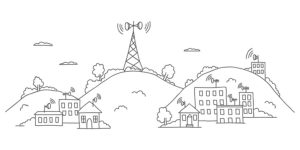The health effects of 5G radiation are still being debated, however one study suggests that there is a connection between radiofrequency radiation and the development of cancers in male rats. The study was classified before it was removed at the end of 2012 by Central Intelligence Agency, but it demonstrates that radiofrequency could cause cancer in animals, which includes humans. In the study, researchers exposed male rats to radiofrequency for 15 days and discovered that they developed the same types of cancers as human beings do.
The health effects of 5G radiation
Although the rapid growth of wireless communications is causing the development of 5G technologies, there are growing concerns regarding the health risks of 5G radiation. While the higher frequencies may not affect the body as much as the older technology, researchers have pointed to possible systemic impacts and are calling for further studies. To ensure that the population is protected and protected, the European Commission is requesting independent studies to determine whether the technology poses any health risks.
It is crucial to remember that there's a large number of misinformation about the health implications of 5G and it is crucial to clear any doubts that remain. Although the technology isn't yet widely used but there are a lot of people who are being told that it might cause health problems mostly via social networks, where hyperbolic language is used.
Beamforming technique
Beamforming is one of the most important technologies for the 5G wireless networks. It is a technique that makes use of several radiating elements to produce a narrow beam. The goal for beamforming is minimize the amount of unwanted radiation within the resultant signal. This technique is commonly used for wireless communication systems, and is essential for 5G's cost-effective coverage.
The method works by electronic weighting of the individual signals of each antenna. This produces a small beam of radiation that increases cell coverage indoors and near the cell's edges. This technique is vital since poor coverage could result in low user satisfaction. Apart from increasing the signal quality, beamforming helps reduce the amount of interference a user encounters from other devices.
5g radiation symptoms of 5G radiation coming from cell towers will be similar to previous generations of 4G and 3G systems. A reason that lower density is the sensitivity of electronic components. The highest radiation output of a 2G handset was about 2 Watts, while that of the 4G model was around 200 milliwatts.
The power density is how much electromagnetic energy can be absorbed into the body from a specific distance. Its power density in radiation 5g is typically expressed in the watts per square meters. In 5g towers radiation to the SAR measurement power density is a measure of the amount of electromagnetic energy that can be found in a given space. The power density limits can be different for mobile devices and wearables depending on their operating frequency and distance.
Specific absorption
A Specific Absorption Rate (SAR) can be described as a parameter that measures the rate at which a certain frequency deposits power into human tissues. In general, a SAR value is not more than two watts per kilogram of body mass. This figure is derived by the electrical field present in tissues as well as the mass density, measured as kilograms for each cubic meters. 5g radiation symptoms was recently used to determine the antenna design.
The latest radio technologies that comprise the network 5G work in frequencies that are lower than 6 GHz. These frequencies are known by the name millimeter wave. However, according to the FCC's SAR compliance protocol only applies to frequencies of up six GHz. Additionally, the SAR test requires that measurements are conducted with phantoms made of tissues simulating media.
Skin health and its effects

At present, we are not aware of the effects of 5G radiation to the skin. The existing knowledge is limited because of the absence of in-vivo experiments and theoretic models. There is however an urgent need for more studies of the effects of 5G radiofrequency radiation on human skin. The use of 5G radio frequencies could cause damage to the skin, especially to the epidermis which is an extremely sensitive organ.
In contrast to 4G, 5G radiation has a high frequency that has been found to heat human body tissues. Human bodies are dipolar, and the higher frequency of radio waves from 5G can cause heat to the skin. Exposure to 5G radio frequencies can be detrimental to other organs of the body, including the brain.
